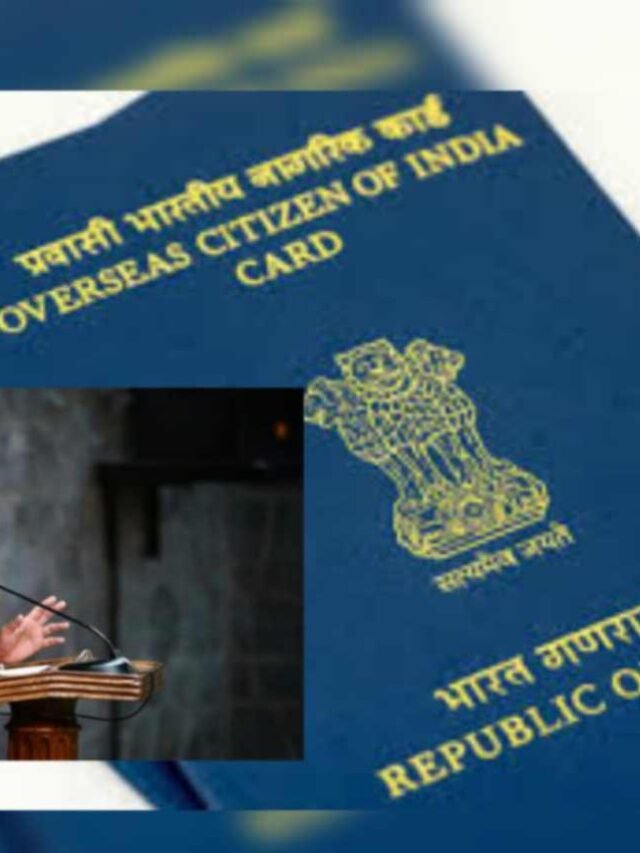Understanding Intellectual Property Rights (IPR): Balancing Innovation and Access in a Global Context
Intellectual Property Rights (IPR) encompass the legal safeguards for original creators, safeguarding their works from unauthorized use. These rights comprise patents, trademarks, copyrights, industrial design, and geographical indications.
The goals of IPR include:
Stimulating Innovation
By offering legal protection, intellectual property rights motivate creators, inventors, and businesses to invest resources into developing new technologies, products, and artistic works, fostering innovation across various domains.
Upholding Creator Protection
IPR serves to shield creators, inventors, and businesses from unauthorized utilization or reproduction of their creations.
Fostering Equitable Competition
IPR fosters fair competition by safeguarding sensitive business information like trade secrets and preventing others from using similar logos, slogans, and distinctive marks.
Ensuring Consumer Safeguards
These rights ensure consumer protection by enabling access to high-quality, authentic products and ensuring the credibility of the origin of goods or services. Trademarks and copyrights prevent confusion or deception, while patents and trade secrets aid companies in protecting sensitive information from unfair competition.
Promoting Global Trade
International agreements like the Berne Convention, Paris Convention, and TRIPS agreement play a pivotal role in safeguarding intellectual property rights, ensuring fair compensation for creators, and protecting consumers from confusion and deceit, thus facilitating smooth international trade.
Types of Intellectual Property Rights
Types of Intellectual Property Rights (IPR) encompass a range of legal protections for intangible assets.
The following are the five types of IPR, along with brief explanations:
Patent
A patent is an exclusive right granted to an invention or product that introduces a unique way of doing something or an entirely new conceptual framework that provides an innovative and distinct solution to a problem.
Patents are typically valid for a limited period, commonly 20 years. They are crucial in the contemporary competitive market to ensure sustainability in industrial advancements. However, to qualify for patent protection, an innovation must satisfy specific requirements, including novelty, non-obviousness, utility, enablement, best mode, and disclosure, and it must not be an abstract idea or a law of nature.
Under the Indian Patent Act of 1970,
In the Indian Patent Act, Section 2(1)(j) specifies that an “invention” is defined as a new and valuable product or process involving an inventive step or a useful improvement of an existing product or process. An “inventive step” refers to something not obvious to a person with ordinary skills in the relevant field, and a “new invention” is a product or process involving an inventive step and capable of industrial application.
Example: Introducing the microwave for the first time represents a new invention, whereas modifying the technology to enable certain plastic bowls for microwave use would fall under inventive steps.
Trademark
A trademark refers to a symbol, design, or any distinctive sign utilized to differentiate and distinguish the goods or services of one company from those of others. The primary purpose of trademarks is to offer legal protection, preventing unauthorized use of similar marks that might confuse consumers.
Trademarks can take the form of words, logos, sounds, colors, or a combination of these elements. They serve to safeguard various products such as clothing, electronics, and food, as well as services like consulting, advertising, and legal services.
Through the use of trademarks, customers can identify and select products based on the unique qualities associated with these marks. The duration of trademark protection varies, but renewal is typically possible upon payment of the requisite fees.
- Notable examples of trademarks include:
- Apple (related to computer technology)
- Nike (associated with athletic apparel and footwear)
- Coca-Cola (related to soft drinks)
- McDonald’s (associated with fast food)
- Amazon (related to e-commerce)
These trademarks have global recognition, instantly linking them to the specific products or services they represent. A robust trademark can help a company establish brand recognition, foster customer loyalty, and gain a competitive edge in the market.
Industrial Design
Industrial design focuses on the creation and development of tangible objects. This field incorporates the application of technical principles, ergonomics, and aesthetics to craft visually appealing and practical mass-produced items.
Industrial designers engage in the design of various products, including consumer goods, electronics, furniture, medical devices, and automobiles.
Their objective is to produce products that are visually appealing, user-friendly, reliable, and efficient.
The process of industrial design involves several stages, such as research and analysis, sketching and prototyping, and testing and refining the final design. Designers must consider materials, manufacturing techniques, and expenses to create a functional and economically viable product.
Industrial Design protection typically spans 20 years.
The impact of industrial design can be significant for a company, affecting consumer purchasing decisions, brand recognition, and overall perceptions of the company and its products. Consequently, many businesses invest in industrial design to develop products that stand out in the market and cater to the needs and expectations of their customers.
Geographical Indication
Geographical Indication (GI) is a form of intellectual property right that designates a product as originating from a specific geographic location and possessing certain qualities or reputation attributable to that origin.
GI protection serves to safeguard traditional and distinctive products that are manufactured in a particular region and are renowned for their unique characteristics, taste, and quality.
For instance, Darjeeling tea is a well-known geographical indication from the Darjeeling district in West Bengal, India, recognized for its distinct flavor and aroma.
Geographical indications prevent the imitation and misuse of products and prohibit others from using identical or similar names that might mislead consumers.
In India, the Geographical Indication of Goods (Registration & Protection) Act of 1999 governs and protects geographical indications. This act stipulates that the registration of a Geographical Indication is valid for ten years and can be renewed for an additional ten years through an application made in the prescribed manner.
Copyright
Copyright in India is governed by the Copyright Act of 1957, which protects original literary, dramatic, musical, and artistic works, along with sound recordings, cinematographic films, and computer software.
In India, copyright protection is automatic and arises when a work is created and fixed in a tangible form, even without registration. However, registering with the Indian Copyright Office can offer added legal benefits and facilitate the enforcement of rights in the event of infringement.
The copyright holder possesses exclusive rights to reproduce, distribute, and perform the work, as well as create adaptations or derivatives of the work. These rights can only be licensed or transferred to others with the copyright holder’s consent.
In India, the typical duration of copyright protection lasts for the life of the creator plus an additional 60 years following their demise, specifically for literary, musical, and artistic works. For cinematographic films and sound recordings, the protection extends for 60 years after their initial publication.
The copyright law in India maintains an equilibrium between the rights of creators and the interests of users, permitting specific exceptions such as fair use and fair dealing. These exceptions apply to activities such as criticism, commentary, news reporting, teaching, scholarship, or research.
Overall, copyright protection in India is crucial for creators, enabling them to manage the use of their works and monetize their creations through licensing, sales, and various other forms of revenue generation.
International Conventions for Intellectual Property Rights
International conventions for Intellectual Property Rights are a set of agreements and treaties that establish a global framework for safeguarding intellectual property rights. Several significant international conventions pertain to IPR, some of which include:
Paris Convention
The Paris Convention safeguards patents, trademarks, industrial designs, and geographical indications internationally. Under the auspices of the World Intellectual Property Organization (WIPO), the 1883 Paris Convention sets forth critical provisions for the protection of industrial property rights. These include national treatment, the right of priority, central attack, and common rules, creating a fundamental framework for the defense of industrial property rights across multiple nations.
Berne Convention
The Berne Convention, administered by the World Intellectual Property Organization (WIPO) since 1886, shields the copyright of literary and artistic works globally. Notable provisions of the Berne Convention encompass national treatment, automatic protection, and moral rights, serving to establish a basic structure for securing copyright in literary and artistic works on an international scale.
Patent Cooperation Treaty (PCT)
The Patent Cooperation Treaty (PCT), initiated in 1970 and overseen by the World Intellectual Property Organization (WIPO), streamlines the process of filing patent applications across multiple countries. The PCT offers benefits such as centralized filing, international search, international publication, delay in national filings, and harmonized procedures, thereby simplifying and standardizing the patent application process for inventors and companies.
World Intellectual Property Organization (WIPO)
Established in 1967 as a specialized agency of the United Nations (UN), the World Intellectual Property Organization (WIPO) is dedicated to advancing the protection of intellectual property rights globally. Based in Geneva, Switzerland, WIPO administers and manages international treaties for IP protection, offers technical assistance to countries, fosters cooperation and collaboration, and conducts research and studies on IP matters, playing a critical role in promoting IP rights and encouraging innovation and economic development.
conclusion
The protection of Intellectual Property Rights (IPR) is a fundamental pillar in contemporary society, fostering innovation and originality while guaranteeing due recognition and compensation for the creators and proprietors of such works. Nevertheless, IPR presents intricate challenges, including the delicate balance between creators’ and owners’ rights and the public’s requirement for access to and utilization of these works for the greater good.
The efficient safeguarding and administration of IPR necessitate thoughtful deliberation and collaboration among governments, enterprises, and individuals.
frequently asked questions
What is the significance of Intellectual Property Rights (IPR)?
Intellectual Property Rights are crucial as they encourage innovation and creativity by providing protection and incentives for inventors and creators. They ensure that individuals and organizations can benefit from their work and investments, thus fostering economic growth and advancement.
What are the different types of Intellectual Property Rights (IPR)?
The main types of IPR include patents, trademarks, copyrights, industrial designs, and geographical indications. Each category provides specific protections for different types of intellectual assets.
How does the concept of fair use or fair dealing apply to Intellectual Property Rights?
Fair use or fair dealing provisions allow for limited use of copyrighted material without the need for permission from the copyright holder. This is often applicable for purposes such as criticism, commentary, news reporting, teaching, scholarship, or research, and aims to balance the rights of the creator with the public’s interest.
























